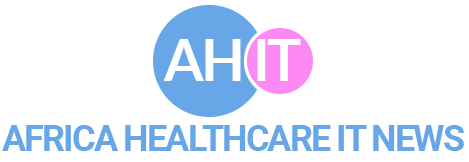By Greg Slabodkin:
Mobile healthcare neither replaces nor displaces health providers but enables and enhances their practices, according to an article in the Online Journal of Nursing Informatics.
The authors use three case studies from around the world to demonstrate the potentials of mHealth to fulfill applications in community health, epidemiology, and acute care evidence-based practice, as well as building awareness, capturing data on a near/real time basis, and remotely monitoring chronic health conditions.
The article examines the Mobile Technology for Community Health (MOTECH) initiative in Ghana for building awareness of critical maternal client information, the EpiSurveyor project globally for capturing real time data, and Enhancing Nurses Access for Care Quality and Knowledge through Technology (ENACQKT) in the Caribbean for remote monitoring.
“It is a frequent concern that the technology is complicating or creates a barrier between patients and providers,” state the authors. “However, in each of the three cases reviewed, this concern was either mitigated or refuted, partially due to the ubiquity and simplicity of these tools. Health providers at varying levels (i.e., community workers to professionals) demonstrated uptake and implementation of the technologies in the spirit of innovation and quality improvement.”
Funded by a grant from the Bill & Melinda Gates Foundation, MOTECH is a collaboration with Columbia University’s Mailman School of Public Health and the Ghana Health Service. The two-and-a-half-year project offers a suite of services delivered over basic mobile phones that provides relevant health information to pregnant women and encourages them to seek pre-natal care from local facilities. After birth, the system addresses common questions about newborn care. At the same time, the MOTECH system helps community health workers identify women and newborns in their area who need healthcare services and automates the process of tracking patients who have received care.
“From its inception, the combination of client-focused and provider-focused applications was seen as a strength,” states the article. “This not only connected the women virtually, but also created a linkage to the nearest health facility. These messages were generic and meaningful to a broad group–an unanticipated strength of the project. There was an assumption that women had mobile phone access, yet these devices were rarely personal but there tended to be a communal sharing of information and messages.”
EpiSurveyor is a free mobile phone- and web-based system used for the collection of information regarding clinic supervision, vaccination coverage, or outbreak response, as well as the identification and management of important public health issues including HIV/AIDS, malaria, and measles. As of April 2012, EpiSurveyor, based in Kenya, has nearly 8,000 users in more than 170 countries worldwide including the U.S., Kenya, Guatemala, the U.K., Tanzania, India, Pakistan, Mali, the Philippines, Zambia, Malawi, Nigeria, Peru, Brazil, Indonesia, and Liberia, making it the most widely-used mHealth software.
The health ministries of at least 15 countries in sub-Saharan Africa are also using the software. Created by Georgetown University pediatrician Dr. Joel Selanikio, EpiSurveyor was tested with the World Health Organization’s Regional Office for Africa in 2005 as an application that combined Windows-based forms design and data collection software built for the Palm OS.
“Through mobile devices configured with this simple software, EpiSurveyor has addressed complexity, access, and cost effectiveness to bring the possibilities of quality data capture to the curbside,” states the article. “According to the developers, this program is a simple yet powerful software to ensure that evidence (data) will be captured to assess and inform health status and care indicators in developing contexts.”
For its part, ENACQKT empowers nurses by providing training and other services via PDAs. A key component of ENACQKT is building nurses’ capacity through technology instruction, giving them the means to access healthcare applications through the PDAs provided by the program. In the article, one nurse is quoted as saying that “this project has changed the culture of our organization, our team, and our profession.” ENACQKT focuses on clinical and educational applications related to three major health challenges–HIV/AIDS, diabetes and hypertension–all of which are among the leading causes of death among Caribbean countries.
“These global initiatives are indeed making a difference and will continue to incrementally and collectively contribute,” concludes the article. “The possibilities speak for themselves, however, governments, funders, users, and other stakeholders must continue to be involved and integrated in order to inject the vitality factor necessary to sustain and maximize these potentials. Ultimately, the health providers will be the vectors to this vital element’s entry and sustainability in developing contexts.”
mHealth initiatives making a difference
Spread the love
1 2


